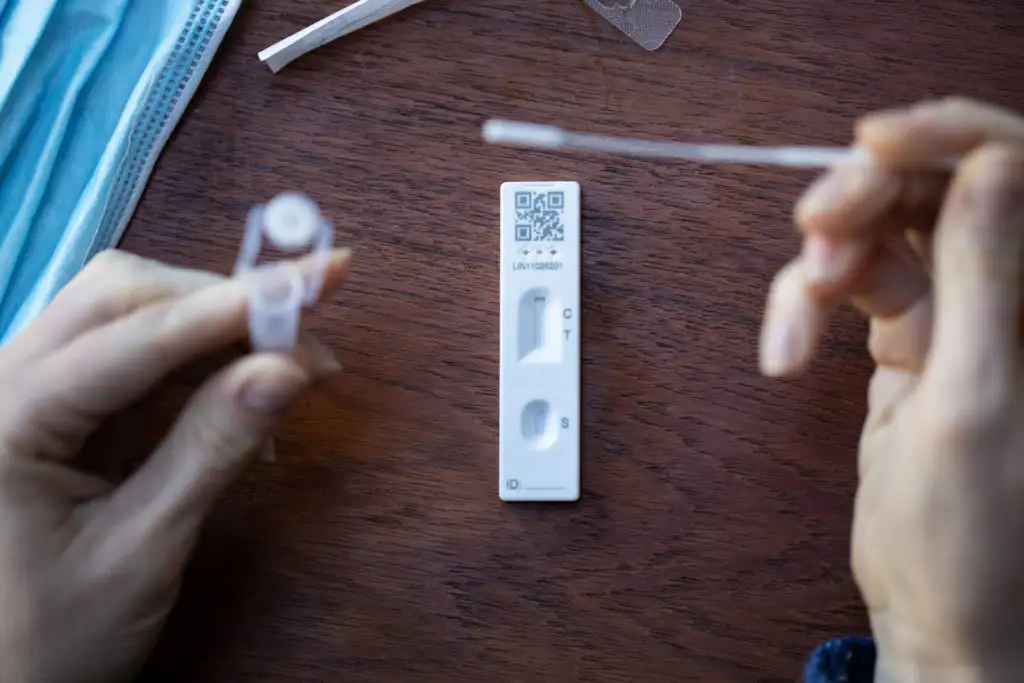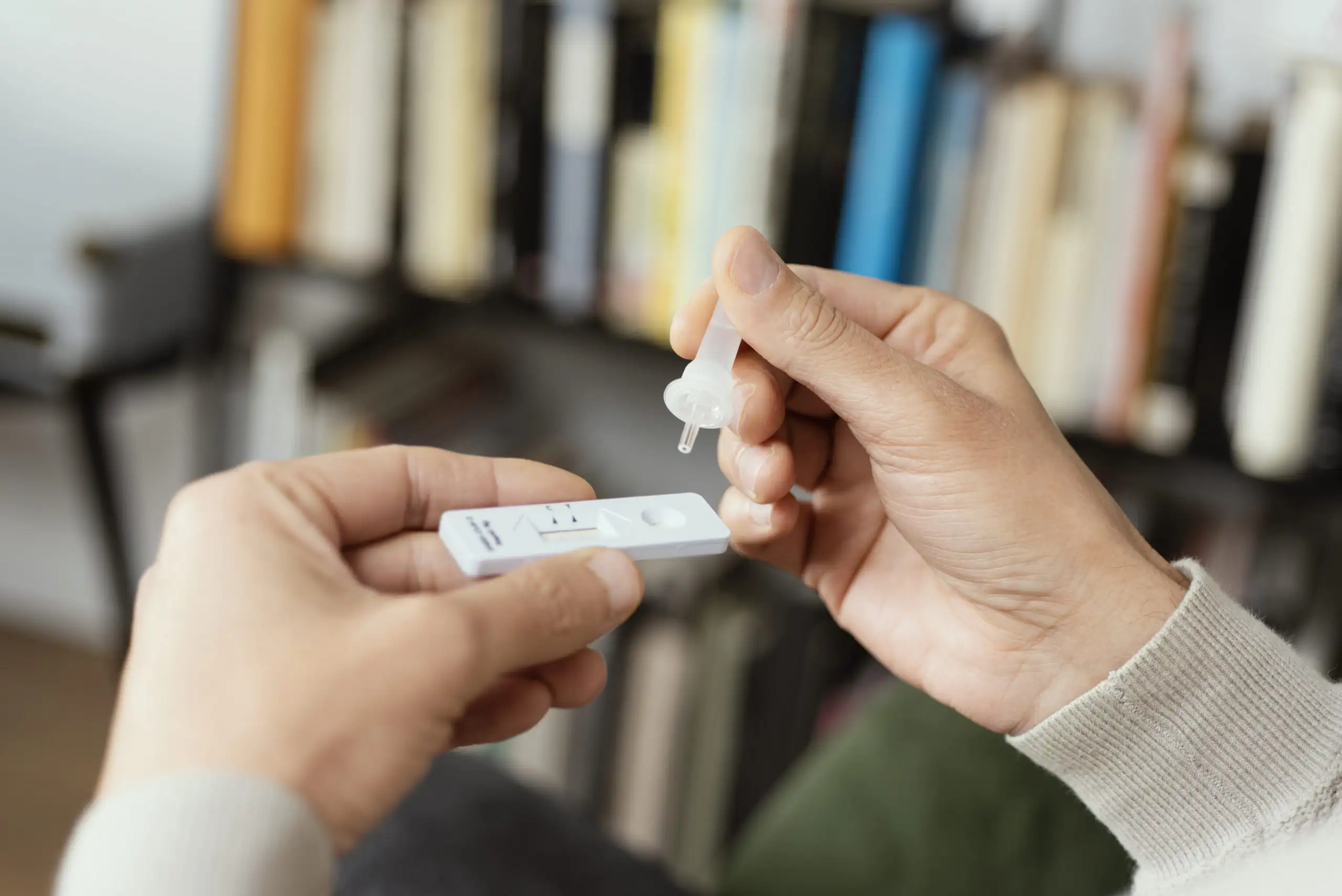At the beginning of the pandemic, getting a COVID-19 test was a tall order, appointments were hard to get, there were long lines at designated sites, and you sometimes had to wait days for results. Fortunately (or unfortunately because we are still in the pandemic), over-the-counter take-home COVID tests are now an option for families who want to avoid urgent care offices or emergency rooms, but want to test their children.
President Biden announced late last year that, beginning in January 2022, private insurance companies will be required to cover the cost of at-home COVID testing. But what types of test are available, and how do you use them?
What At-Home Tests Are Available?

There are currently twenty at-home COVID tests that are authorized by the FDA. These include sixteen antigen tests and four molecular tests.
Antigen Tests
- CLINITEST Rapid COVID-19 Antigen Self-Test
- SD Biosensor COVID-19 At-Home Test
- iHealth COVID-19 Antigen Rapid Test
- CareStart COVID-19 Antigen Home Test
- BD Veritor At-Home COVID-19 Test
- SCoV-2 Ag Detect Rapid Self-Test
- BinaxNOW COVID-19 Antigen Self Test
- InteliSwab COVID-19 Rapid Test
- Celltrion DiaTrust COVID-19 Ag Home Test
- QuickVue At-Home OTC COVID-19 Test
- Flowflex COVID-19 Antigen Home Test
- InteliSwab COVID-19 Rapid Test Rx
- BinaxNOW COVID-19 Ag Card Home Test
- BinaxNOW COVID-19 Ag Card 2 Home Test
- QuickVue At-Home COVID-19 Test
- Ellume COVID-19 Home Test
Molecular Tests
- Detect Covid-19 Test
- Lucira CHECK-IT COVID-19 Test Kit
- Cue COVID-19 Test for Home and Over The Counter (OTC) Use
- Lucira COVID-19 All-In-One Test Kit
Many tests are available for purchase in-store and online from retailers like Walgreens, CVS, and Walmart. Although, due to high demand and shortage of supply, it may be difficult to find at test at your local drugstore.
Related: I Tested Out Two Packable COVID Tests to Fly Back to the USA: This One Was the Clear Winner
What is the Difference Between an Antigen and Molecular Test?
Antigen tests are a bit simpler than molecular tests in that they simply detect the presence of the proteins that are present in the SARS-CoV-2 virus within the sample. False negative results can occur, and are more likely to occur when the person taking the test is infected but asymptomatic. False positive results are more common than with molecular tests, but are relatively rare when using FDA authorized testing kits.
Molecular tests (for example, a PCR test) are more sensitive and are able to detect if the SARS-CoV-2 virus is present and are considered to be more accurate.
When Can I Use an At-Home COVID Test?
The CDC announced new rules last month that require proof of a negative COVID test taken within one day of departure for travelers returning to the United States, making packable at-home tests with telehealth supervision a necessity for international travel. However, these tests are not universally accepted for travel to a destination or entrance to an event that requires a negative test, so make sure to check your destination’s or venue’s policies ahead of time.
Nevertheless, the take-home test is a great option for personal use and decision-making. If you are flying domestically, it might be a good idea to take one to ensure the safety of yourself and everyone on board. If you are going somewhere that requires you to get tested upon arrival, you can take one beforehand to avoid any surprises when you arrive.
If you are planning a road trip somewhere and want to make sure you are negative before heading out, a take-home test is a perfect way to ease your mind. If you have a child attending school or daycare, and they get sick, rather than dragging them to urgent care or the doctor, this is another, easier option.
Related: Best Face Masks for Kids and Toddlers
How Do At-Home COVID Tests Work?
At-home tests are fairly easy to use. You get test results in less than a half-hour, without having to send them to a lab for testing or waiting for your results online. The collection kits come with detailed instructions on how to swab your nose. Some kits come with the option to take the test under the supervision of a telehealth professional while others are self-guided. Remember: not all at-home tests meet the requirements for international travel. Check the requirements of your destination to make sure you are choosing the correct test.
Have more questions? Check out the COVID Tests for Travel FAQ on our sister site, SmarterTravel.
You Might Also Like:
• 5 Best Fitness Trackers for Kids• 8 Best Instant Cameras for Kids
• The Best Digital Picture Frames
• How to Practice Hygge With the Whole Family
• The 24 Best Christmas Books Your Kids (and You) Will Love
Our team of parents and travel experts chooses each product and service we recommend. Anything you purchase through links on our site may earn us a commission.







